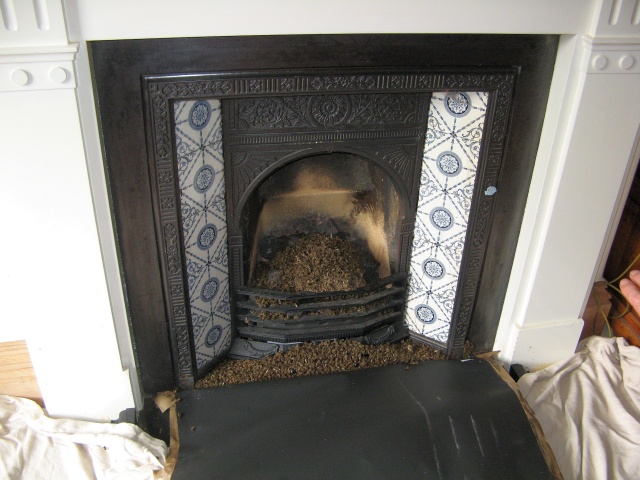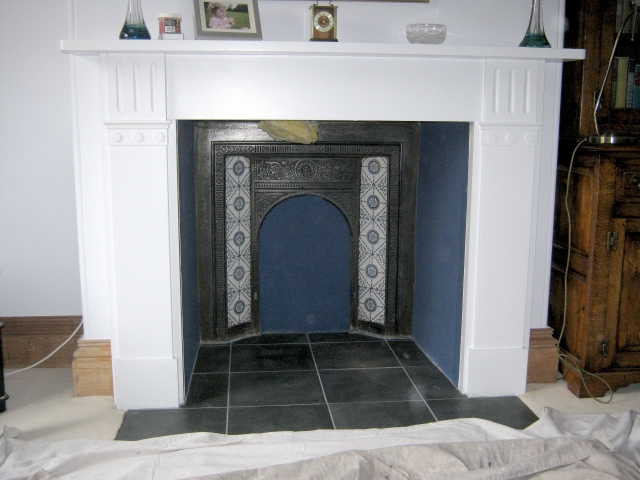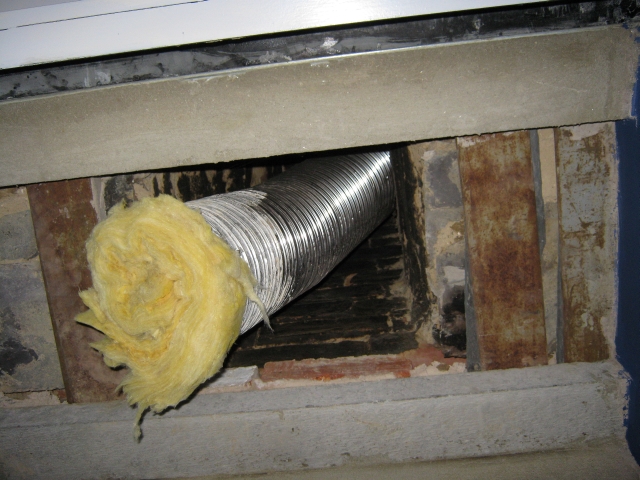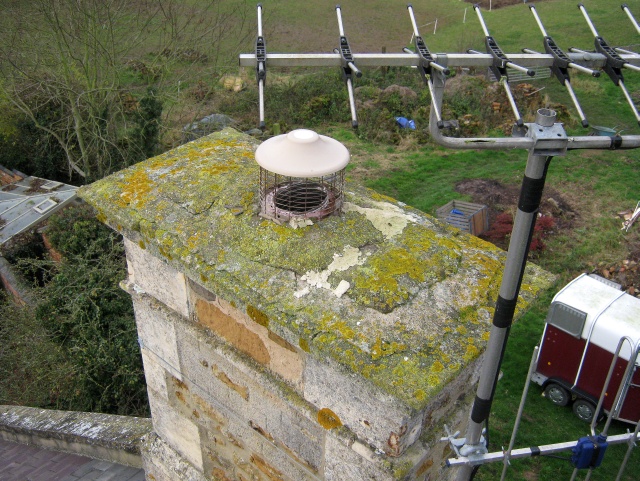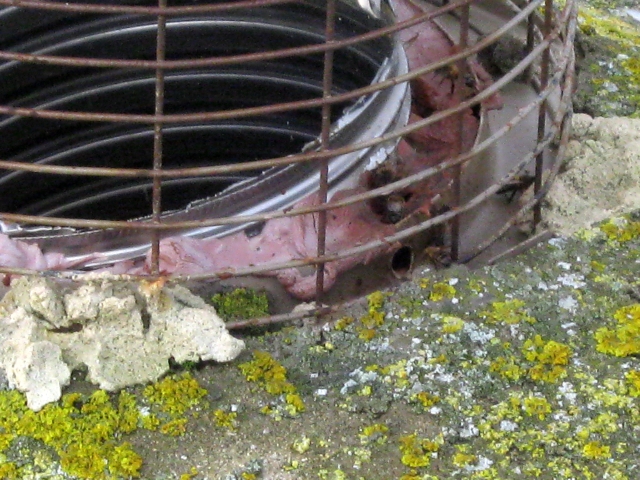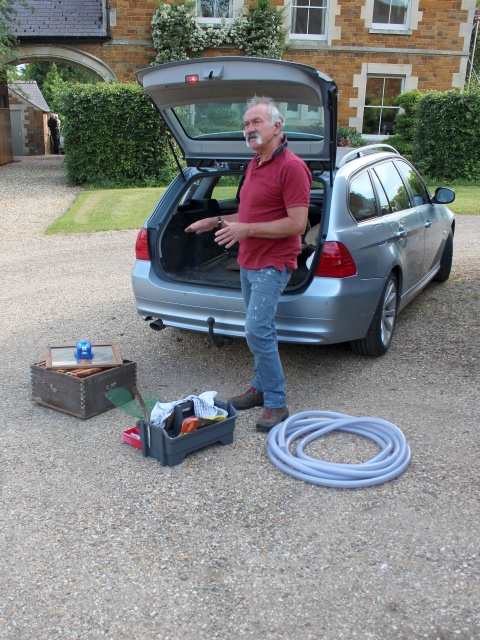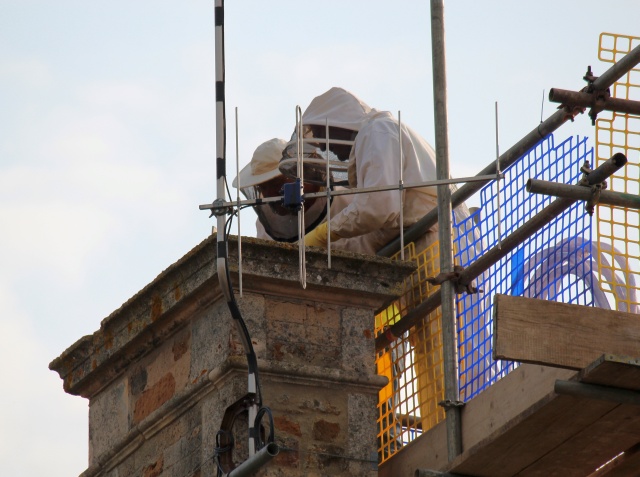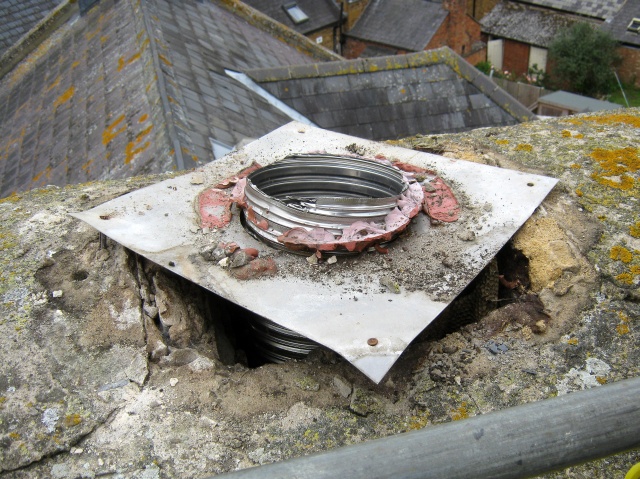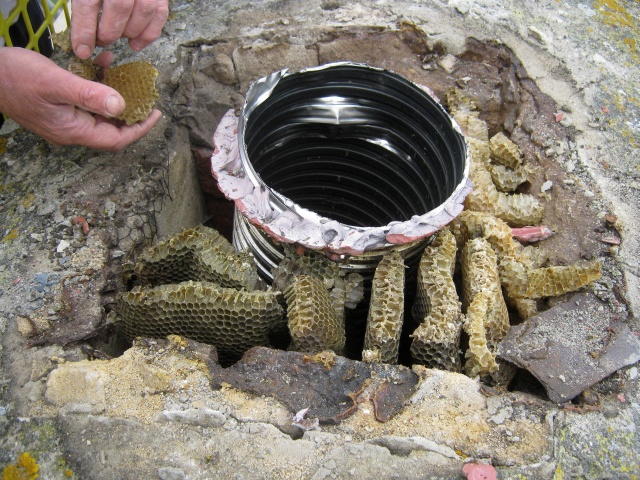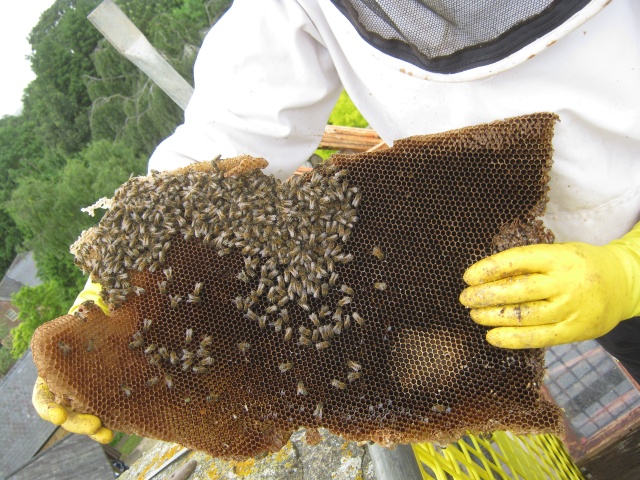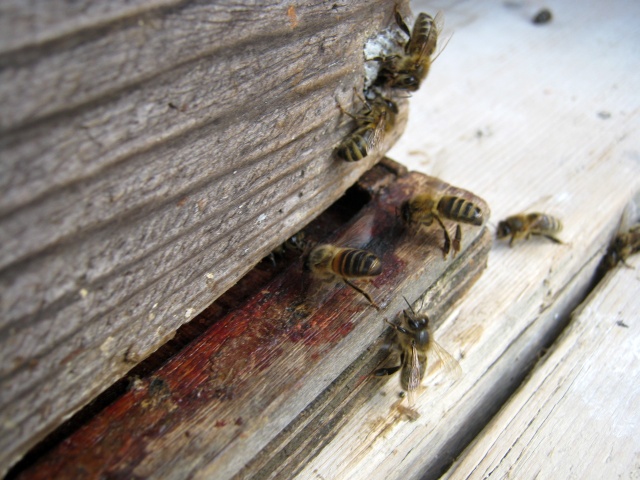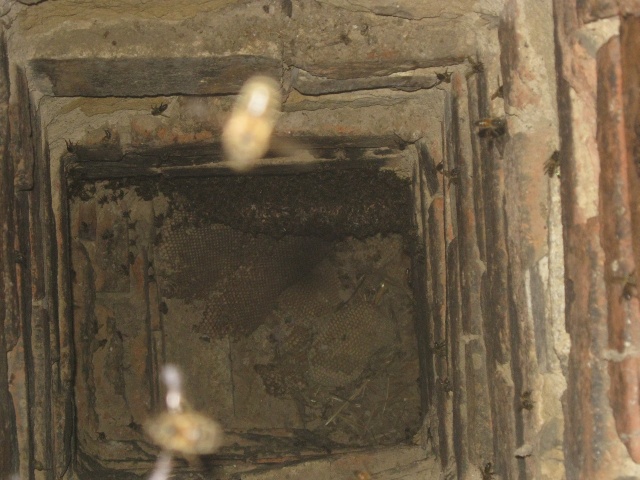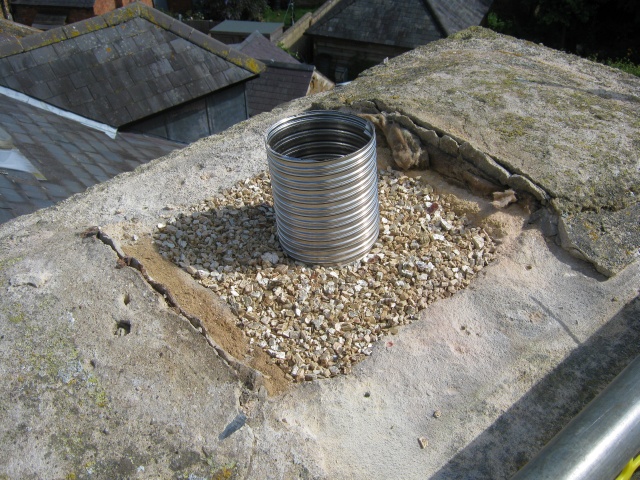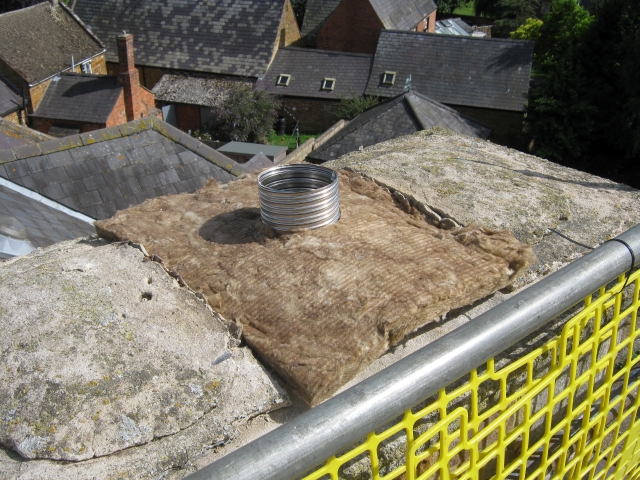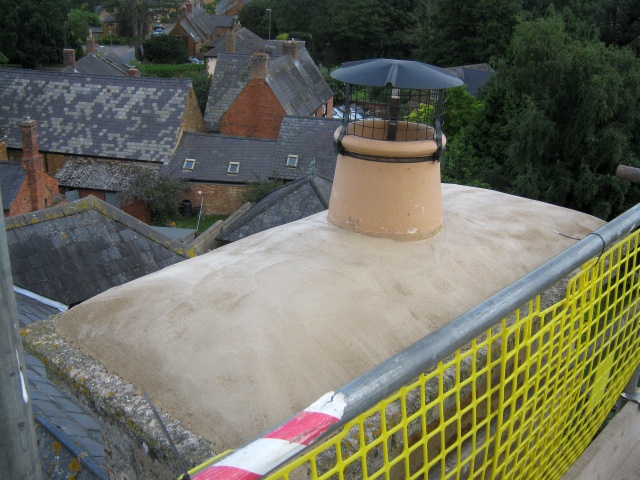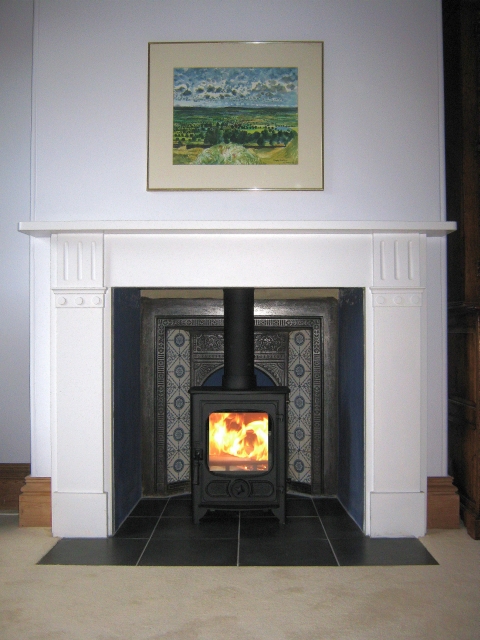Project Showcase |
View other showcases |
Fireplace altered and new Charnwood stove and flue liner fitted near Uppingham, oh and bees in the chimney
This old Victorian fireplace had an open gas fire fitted some years ago with a stainless steel chimney liner. It was boarded over because the client had regular problems with bees coming into the room and it was assumed they just came down the liner. But when the fireplace was uncovered rather more bees were found than was anticipated.
The fireplace has been altered, the builder removed part of the wall of the house and created an external fireplace aperture. This allowed the the old Victorian cast iron fireplace to be incorporated into the design and give enough depth to fit the new Charnwood stove.
The existing chimney liner was of suitable specification with all of the installation information available and so it was intended that we use this lining with the new multifuel stove. A camera survey was carried out to check that it was not damaged and see if there was a bees nest in it. It was in good condition with no bees nest found and so we moved on to pressure smoke test it to check it's integrity.
The top of the chimney was accessed using a cherry picker to carry out the pressure smoke test on the lining as it is safer than using ladders and cannot damage the slate roof. Considering the chimney was lined relatively recently the flaunching looked to be in poor repair with the cowl mortared into it.
There were bees going into the chimney as we approached in the cherry picker and there was definitely a nest in there. As it was not inside the liner it must be between the liner and the masonry. On zooming the camera in they could be seen going in through holes in the badly flaunched chimney.
No it's not Tommy Cooper, it's a client of ours who is an apiarist. We've had a scaffold erected and he's brought a bait hive to install on the scaffolding so that we can remove and re-home the bees.
Here goes! We've popped on the bee suits and are beginning the removal process. The first thing to do is see where the bees are going into the chimney and block up any other holes before setting up the bait hive which we'll leave until all the bees have gone into it.
Oh dear, the bait hive won't be possible and we have had to open up the top of the chimney by removing the cowl and defective flaunching. We can now see into the void between the lining and the masonry.
Ah that will be quite a lot of honeycombs then. This looks like it should be a large colony but although the bees are flying around us they're not stinging. According to Richard the bee keeper this would indicate that the colony is not very strong.
We have started to remove the combs in the chimney, this one is quite impressive but some of the combs are nearly two metres long. It will be necessary to take the flue liner out to completely remove all the honeycombs.
The old chimney liner has been removed as have most of the honeycombs. They have all been put into frames and inserted into the hive we have on the scaffolding. The bees are now flying out of the chimney to the hive and exhibiting behaviour that attracts the other bees indicating we might have removed the queen.
The bees were all gone when we left yesterday and we sealed the chimney overnight but after a call from our client the next day we found rather too many bees on some honeycomb that had dropped down the chimney. Oh dear, we'll have to come back and get these out now. When we came back the next day they had all left.
The new chimney liner is now fitted. So that we can stop the bees going back into the chimney we have filled the void between the liner and the masonry with vermiculite granules.
In order to reduce the risk of bees entering even further we have used a fireproof fibreglass pad on top of the chimney below the chimney pot. This will be covered over with a steel top plate before the chimney pot is fitted.
The chimney is now finished with a new chimney pot and flaunching. A stainless steel birdguard cowl painted black to reduce the visual impact has been fitted to reduce water ingress and prevent birds getting in.
The new efficient Charnwood Country 4 multifuel stove is now fitted and is being commissioned as part of the Fotheringhay Woodburners handover process.
